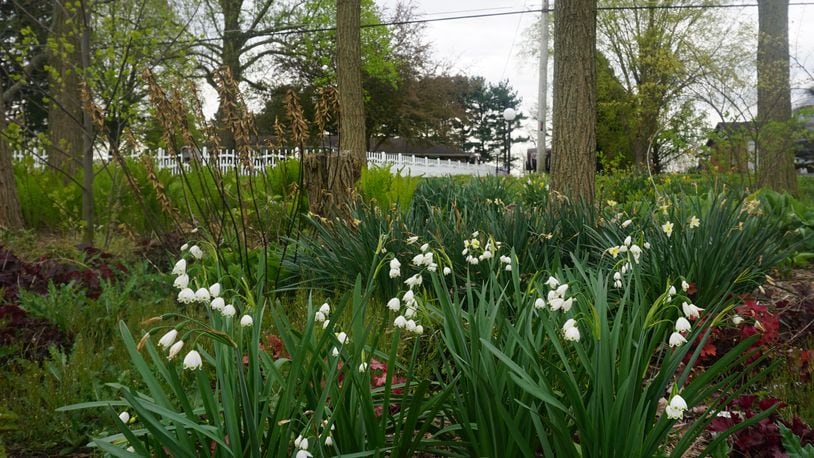I try to have a nice mix of early, mid-, and late-season bloomers in terms of daffodils. This way I have a nice solid stream of daffodil flowers. I also add in some of the more unusual bulbs such as Leucojum (summer snowflake), Eremurus (aka foxtail lily and early blooming Allium.
The big question is what to do with the foliage after they finish blooming and no longer look nice in the garden?
Many like to twist, fold, and rubber band or braid and rubber band daffodil foliage. This is not recommended yet people have done it for years and are still seeing flowers the next season. Eventually, they will decline, just like all other daffodils.
The bulb of the daffodils consists of stored energy and to replenish the energy for next season’s blooms, the foliage needs to keep photosynthesis going as long as possible. Therefore, when you remove the foliage while still green, it decreases the food supply.
When you twist, tie up, or braid, you are simply reducing the surface area for photosynthesis. Thus, eventually, the bulb’s energy will deplete over time.
Typically, most recommendations tell you to interplant other perennials around the daffodils that will grow in the spring and cover the dying foliage. This is easier said than done. I have had some luck in areas of my perennial bed with this but find it challenging.
I have learned to tolerate the dying foliage. In some cases, in a wooded area, I just let them go and die naturally, adding to the organic matter in the soil. In others, my philosophy is to let them go until I can’t take it anymore and then go one more week.
Technically, if you can easily pull the foliage out of the ground with a slight tug, the foliage is ready. If you must pull (and the bulb comes up with it) you are pulling too early.
I also let my other bulbs like tulips and hyacinths go until they are yellow. I have had these bulbs blooming for over 10 years. I don’t bother with crocus or grape hyacinths.
You don’t have to deadhead (remove dead flowers) daffodils unless you don’t like the looks. Deadhead tulips because letting them go to seed reduces the plant’s vigor.
Most bulbs don’t require fertilizer; do a soil test to find out what nutrients are needed if you are not sure about your bulbs.
We have a lot of phosphorous (P) and potash (K) in our clay soils. You don’t need to add more if you have plenty.
Start making your list now for those spring blooming bulbs you want to plant this fall.
Pamela Corle-Bennett is the state master gardener volunteer coordinator and horticulture educator for Ohio State University Extension. Contact her by email at bennett.27@osu.edu.
Credit: Contributed
Credit: Contributed
About the Author
